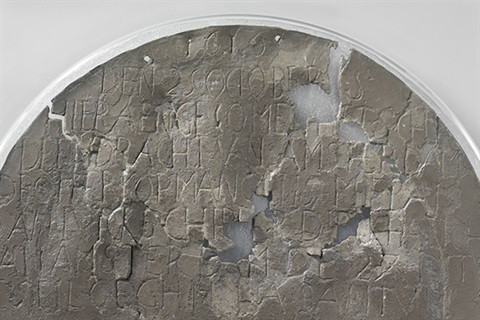Dirk Hartog Plate

This exhibition is now closed.
Displayed at the Queen Victoria Art Gallery from 10 November until 26 November 2017.
In 1616, Dirk Hartog, captain of the Dutch East India Company ship De Eendracht, encountered the west coast of Australia. The ship was on a voyage to Asia, and did not turn north early enough.
Hartog and his crew landed on what is now known as Dirk Hartog Island, near Shark Bay, and on 26 October became the first confirmed Europeans to see Western Australia.
As proof of his presence there, Hartog nailed a flattened pewter dish to a pole with an inscription to mark his landing. It is the oldest European object ever found on Australian soil.
Eighty years later, in early 1697, the Dutch explorer Willem de Vlamingh landed on the island and found the Hartog plate, which lay half-buried in sand. He replaced it with a new plate, which reproduced Hartog's original inscription and added notes of his own, and took Hartog's original with him to Batavia. It was then transferred back to Amsterdam.
The plate has remained in the Netherlands since, but has now returned to mark 400 years since Hartog left the inscribed plate in Australia. QVMAG is the last Australian museum to exhibit this artefact, from 10 to 26 November 2017.
Visit Learning Resources to download the Dirk Hartog Plate Education Sheet.
Image credit: Rijksmuseum